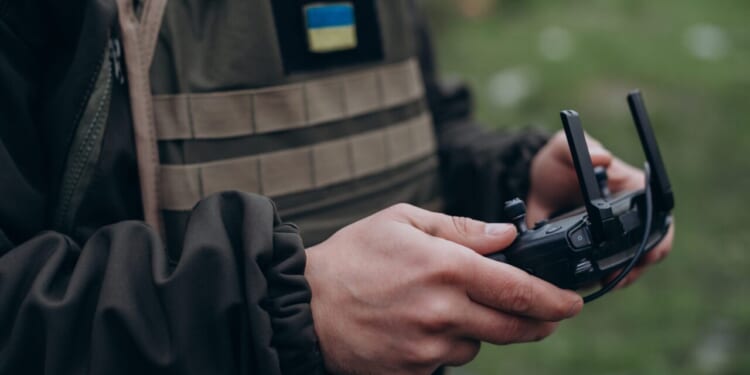The Russian and Ukrainian forces are using drones profusely on a daily basis for a wide range of mission sets.
The United Kingdom has delivered approximately 85,000 drones to Ukraine thus far in 2025, according to the British Ministry of Defence.
Unmanned aerial systems are central to the fighting in Ukraine, with both sides using hundreds of drones every day.
85,000 Drones for Ukraine
“In just 6 months, the UK has delivered over 85,000 military drones to Ukraine, many made in Britain. These drones are helping Ukraine strike targets, gather intelligence and disrupt Russian operations,” the British Ministry of Defence stated.
That amounts to about 14,500 drones per month.
Although artillery continues to be the primary source of casualties for both sides (at some points in the conflict, even becoming the cause for over 80 percent of losses), unmanned aerial systems are a significant source of casualties for both sides.
“Drones are changing warfare. In Ukraine, they are vital to withstanding the Russian assault,” the British Ministry of Defence explained.
Unmanned aerial systems are indeed changing warfare. The Russian and Ukrainian forces are using drones profusely on a daily basis for a wide range of mission sets. The combatants use unmanned aerial systems for reconnaissance, resupply, artillery spotting, and, most often, kinetic strikes against troops, main battle tanks, infantry fighting vehicles, artillery guns, and other weapon systems.
“Backed by £600 million [$804 million] in UK investment, the drones include short range FPVs [first person view drones], logistical carriers and interceptors. This investment supports frontline defence and creates jobs in both the UK and Ukraine,” the British Ministry of Defence stated.
Supplying unmanned aerial systems to Ukraine is a fluid, interactive process. The British military is using real-time battlefield data to improve the performance of drones on the ground, as well as scale production. This is a modern conflict, not World War I, where a strategic, tactical, and technological stalemate led to an actual stalemate on the ground and millions of deaths during brutal trench warfare.
Today, technology advances at a rapid pace and influences how the two combatants fight. There is a constant, unseen struggle between the Russian and Ukrainian forces to invent ways to kill or maim troops on the other side. In the drone context, both sides are developing new drones, new ways drones can deliver weapons, and countermeasures against drones daily.
“This is part of the UK’s record £4.5 billion [$6 billion] commitment to Ukraine’s defence in 2025. European security starts in Ukraine, and the UK is stepping up,” the British Ministry of Defence concluded.
Bolstering NATO Defenses
In addition to sending approximately 85,000 drones to Ukraine thus far in 2025, the British military is bolstering NATO defenses and deterrence in Eastern Europe.
Following the provocative violation of Polish and NATO airspace by Russian drones in September, London committed additional Eurofighter Typhoon fighter jets to the region as part of NATO’s Operation Eastern Sentry. Moreover, British counter-drone experts will deploy to Moldova and train Moldovan forces on how to counter Russian unmanned aerial systems. Further, the UK has partnered with Latvia to produce an additional 35,000 as part of the Drone Capability Coalition.
After the United States took a back seat in supporting Ukraine in 2024, the UK stepped forward and has been providing key military assistance to the embattled nation, as well as important diplomatic support.
About the Author: Stavros Atlamazoglou
Stavros Atlamazoglou is a seasoned defense journalist specializing in special operations and a Hellenic Army veteran (national service with the 575th Marine Battalion and Army HQ). He holds a BA from the Johns Hopkins University and an MA from the Johns Hopkins’ School of Advanced International Studies (SAIS). His work has been featured in Business Insider, Sandboxx, and SOFREP.
Image: Shutterstock.


















